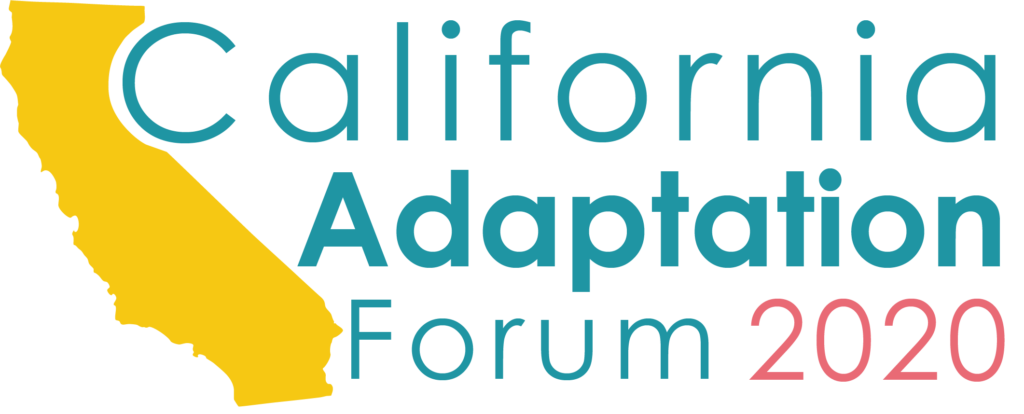It was unusually warm the evening the fires broke out in Sonoma County. Until then it was a very non-memorable evening. My term serving as a fellow with the County of Sonoma Energy and Sustainability Division had just begun. I had known that Sonoma County is an enviable center from which to learn and work on environmental issues and climate change. But in a matter of hours it turned into the epicenter for the most destructive fires in Northern California history. It was the perfect storm: fires caused by long term excessive heat, and pushed by coastal winds that scientists report are indicative of climate change. Fires raged through, demolishing everything in their paths, demolishing even neighborhoods that were built as “low vegetation” to avoid fire danger.
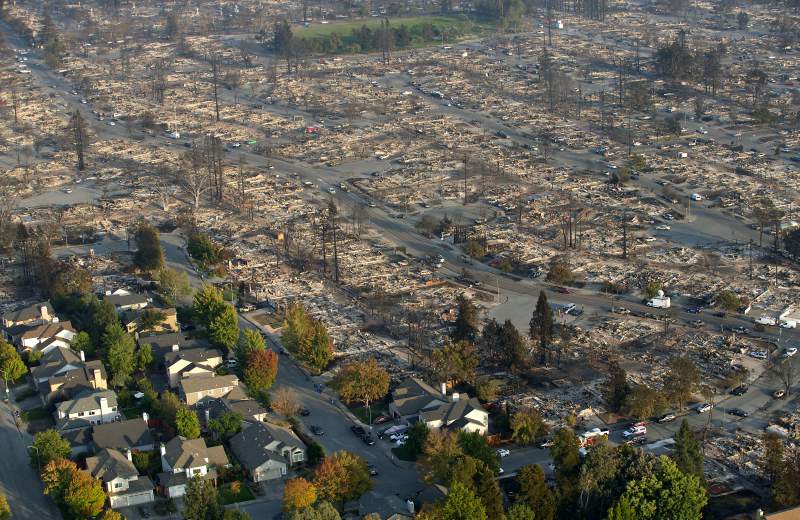
My job changed immediately. All hands on deck to provide relief. I had the opportunity to work at the Santa Rosa Local Assistance Center (LAC) facilitating triage between fire survivors and agents from the Federal Emergency Management Agency (FEMA). The county established the LAC a few days after the fires started with support from private and public sectors. The purpose of the LAC was a one-stop-shop for survivors to interact with federal, state, and local agencies designed to help survivors rebuild their lives post-fires. We helped agencies to replace vital documents, e.g., birth certificates, driver’s license, etc. We also registered with FEMA to become eligible for other federal and state services and support, e.g., food stamps, vouchers for hotels, money to buy clothing and other necessities.
My role was to triage the FEMA requests from survivors, providing the most intense support to those with the greatest needs. There were so many. Most survivors that came through LAC doors wanted to see FEMA because FEMA could provide services and resources essential for their recovery. Some survivors did not know what FEMA was or what they could offer them.
To be honest, I still do not fully understand what FEMA offers and the eligibility required. FEMA’s biggest job seemed to be to identify and mark homes as casualties of the fires. That opened gateways for survivors. Due to the overwhelming number of survivors that came to the LAC, the waiting time proved to be an emotional and physical barrier, another struggle that had to be endured along with everything else. My role was to honestly manage survivors’ expectations, to get individual questions answered by FEMA and to redirect survivors to other services and agencies that could help more rapidly.
This experience made me realize more clearly the lack of efficiency that can occur with government and the lack of knowledge by the general public of what government can offer. I would not have come to know much about FEMA if I had not been assigned responsibilities at the LAC. As a citizen, it is important to understand the role of government and how governmental agencies can serve us. Government agencies receive a lot of bad ‘press’ in large part due to situational frustration, even failure, which is sometimes deserved. However, it is important to understand that crisis events frequently present unanticipated barriers which have to be overcome by survivors and helpers alike. This experience was an important reminder that while civil servants want to and are there to help, some situations result in victims and survivors being on both sides of the response table.
This in turn argues for more transparency between citizens and government as we jointly anticipate and design responses to the unexpected. On the other hand, learning and watching how quickly the county pulled together the LAC was inspiring. The idea came on a Saturday, and the LAC was open two days later on Monday ready to serve the public. It was cool to watch employees, volunteers, private and public organizations come together to coordinate this service. It demonstrated what it looks like when government does something right, examples which are hard to come by these days. There was so much feedback from the public about how much they appreciated this service. They were in awe of how quickly everything came together, and probably a little surprised. It felt good to a part of an initiative that was making a positive impact on lives.
The fire had huge consequences environmentally in so many different ways: human, economic, social, home. Many of these impacts are long-term. It was and remains a very complex active disaster with very complex issues that must be addressed. Available housing stock was already low and prices were high. With the pressure to rebuild quickly and move people from temporary to permanent housing, it demands smarter building, with structures and communities that take into consideration the natural elements, including the changing elements, and to absorb what the environment presents.
These are NOT long-term issues to be addressed for the distant future. Climate change and its impact is NOW. This fire, massively fueled by climate change, was not science fiction. It is not tomorrow’s world. It is today’s. More will happen. We cannot say it was a one-off fire. How do we plan thoughtfully and creatively to live, to survive cooperatively in a fire ecology?
We cannot just say the cause is climate change, way too broad. Instead we must simultaneously address multiple stressors in the environment. We need to think and resource and work at the ecosystem level. We need to build resilience on multiple fronts that supports ecosystem health.
Focusing just on “climate change” may indeed distract from building ecosystem health. Lost time and energy.
How do we do it? How do we plan thoughtfully and creatively to live cooperatively moving forward? To quote Governor Gerry Brown, “There kind of catastrophes have happened and they’ll continue to happen, and we’ll have to prepare to do everything we can to mitigate.” As a Fellow serving in local government, I see an opportunity for local governments to accelerate the efforts to properly manager our forest and build resilience to wildfires. There needs to be thought into fire ecology, focusing on the origins of wildland fire and the relationship to the environment that surrounds it, both living and non-living.
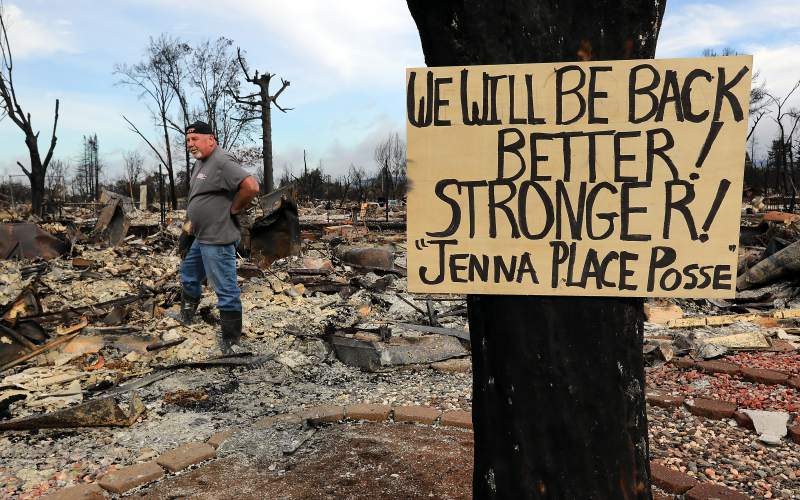
There is work to be done in new construction, taking into consideration urban sprawl and how wildlands and urban development interface. Those influencing the rebuild should consider building in lower fire risk, dense city centers. Local governments should and are revisiting building codes for fire resistance by incorporating fire-safe features into all aspects of new construction, building codes and ordinances, landscaping, evacuation routes, building materials, designing appropriate emergency routes. They should use their influence to place restrictions on where rebuilding can take place.
There were fires zones in Sonoma County that have burned before, but private property rights won over public interest and new properties were allowed to build there. I understand that this is easier said than done, the fight over public trust and private lands, but maybe it is about educating the public that the community that has to pay even more post-disaster than if they had taken the precautions before.
Fires have caused significant air pollution, exposing the most vulnerable to hazardous chemicals, ash, and debris. This means maintaining indoor air quality is vital. It is upon all builders and contractors to encourage the new homes and current ones to incorporate economical technologies into properties to mitigate this risk. It is important to invest in publicly used infrastructure. State of the art power lines must not become their own safety hazards. And water finiteness must not be further diminished by our reactions.
Finally, there needs to be thought into how sustain the needed workforce that will be responsible for building these new communities and new homes. There is a shortage of skilled labor and there must be resources and services to fund and train to meet the upcoming demand.
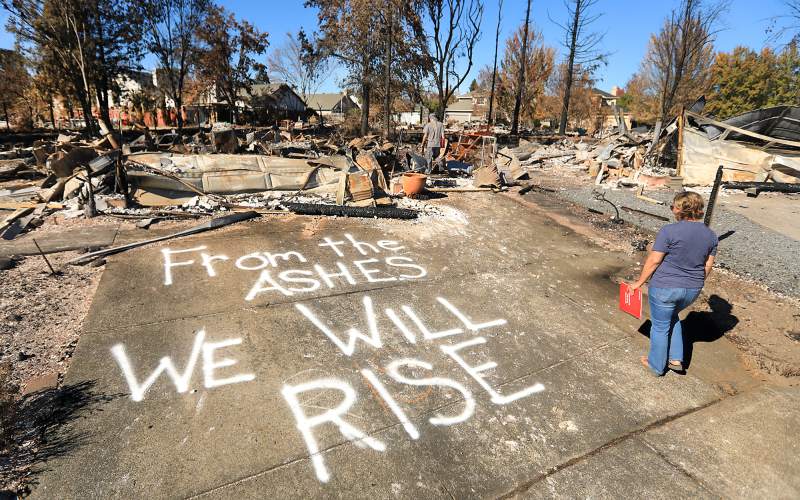
It is most important to take into consideration equity and the demographic of those who will be doing the labor. We must ensure that they are properly trained, have fair labor rights, and income to support their families. Sonoma County already had a housing crisis before the fires, but the crisis has been elevated with the events in October. With less and less people being able to afford to live in the area, we need to ensure that, for those who do decide to choose life in Sonoma County, they have the tools and pathways to do so.
Last, I think leadership is an important role that must be highlighted. It has occurred to me that there are so many well-intentioned organizations and groups wanting to do the right thing. However, I feel there is this competitive edge amongst these entities for resources, funds, limelight, audiences and one has forgotten that if they go it fast, they usually go it alone. Sonoma County has been a green building leader over the years, with innovative and pioneering practices and policies, leading the way to what a healthy house looks like. The county needs to remember those years of pioneering and innovation, and build future successful models from them.
 |
Colgan Powell is an AmeriCorps CivicSpark Fellow with the County of Sonoma Energy and Sustainability Division. A program to build capacity for local governments to address climate change and water management needs. Before CivicSpark, Colgan was part of a working group to help Franklin Regional Transit Authority transition their bus fleet into electric. Colgan spent time abroad in Denmark and Israel, studying sustainable development and environmental challenges as they shift over time. She graduated from Smith College with a B.A. in Environmental Science & Policy and Theatre this past May. Last summer, Colgan completed an M.B.A summer program at the Tuck School of Business at Dartmouth. Colgan sees CivicSpark as an opportunity to engage with businesses to improve their overall sustainable business strategy. She hopes to become a member of the corporate sustainability field that is so prevalent in California. |
